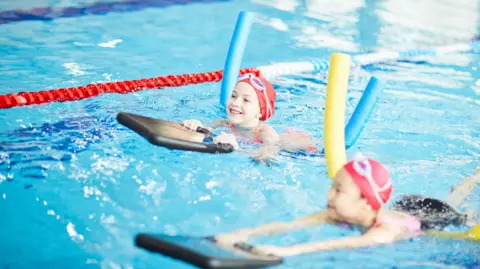**Rising Costs Blamed for Drop in Pool Temperatures**
In a troubling trend emerging across the United Kingdom, over one in seven councils have reportedly lowered swimming pool temperatures in the last five years, according to new statistics released in a recent BBC investigation. The freedom of information requests conducted by the BBC revealed that approximately 15% of local councils have opted to decrease the temperatures of their swimming pools since 2020. The core reason cited for this decision points towards escalating energy expenses, which have become a burden for many local governments.
The Local Government Association (LGA) highlighted that the finances of councils remain in a “fragile position.” As a result of budget constraints, nearly a quarter of councils in England have been compelled to either cut down or close leisure services altogether. This is particularly concerning as swimming pools serve an important role in community health and recreational activities.
A notable critique comes from individuals like Tiffany Watson, 55, who previously relied on swimming to manage her muscular dystrophy. She passionately urged local councils to think carefully about their decision to alter pool temperatures, fearing it could alienate swimmers who depend on these facilities for their health and wellbeing.
The investigation discovered that of the 256 councils surveyed, 39 had explicitly lowered pool temperatures in the last five years. Alarmingly, 33 of these local authorities had permanently reduced the temperature in at least one main or learner pool. Notably, no council lowered their pool temperatures by more than one degree or went below the specified guidelines from the Pool and Water Treatment Advisory Group, which states that pools should be maintained at 27°C to 29°C for recreational swimming and adult instruction, while advocating a range of 29°C to 31°C for teaching children.
In her heartfelt plea, Mrs. Watson reflected on her experience with central core disease—a rare genetic condition leading to muscle weakness. Prior to the temperature reductions, she enjoyed swimming five times a week, feeling a sense of normalcy and inclusion in the water. However, the drop in temperatures rendered her swimming sessions intolerable as the cold made it challenging for her to warm up post-exercise. “I used to come out and I couldn’t get warm,” she recounted, emphasizing the negative impact the changes have had on her health regimen.
Tiffany expressed that for those with muscle-wasting conditions, such as herself, the cold water presents not just discomfort but also heightened difficulties due to their slower movements in the water. Despite bringing her concerns to the attention of pool staff on multiple occasions, she alleges that she was met with a series of excuses for the prevailing cold conditions. Eventually, Watson had to cease her swimming activities, a decision she highly regrets, noting that it has contributed to a further decline in her mobility. She voiced a strong belief that the temperature reductions are a misguided financial strategy, urging councils, “Please don’t do it—look at the other options.”
In line with these cuts, more than 30 councils have cited rising energy costs post-Covid and amid the war in Ukraine as pivotal reasons for lowering the temperatures. Since early 2019, electricity costs for non-domestic users have soared, doubling from 12.9 pence per kilowatt-hour to about 28.39 pence per kilowatt-hour by 2023. Additionally, five local authorities noted their commitment to sustainability and net-zero targets as further justifications for the temperature adjustments.
A spokesperson for the LGA remarked that “rising energy and operational costs” have made it increasingly difficult for councils to maintain leisure facilities. The narrative emphasizes the need for additional funding to sustain these vital community services, including swimming pools, which play an essential role in promoting public health.
Despite these challenges, a representative from the Department of Culture, Media, and Sport reaffirmed the government’s commitment to fostering a healthier nation, pledging nearly £400 million to support grassroots facilities as part of their initiative to enhance community health and wellbeing. They stressed the importance of tackling barriers to physical activity, especially for under-represented groups.
As local councils navigate these tough financial waters, the need for a balanced approach becomes increasingly crucial. The decisions made today could have lasting impacts not only on local health and community cohesion but also on the overall wellbeing of individuals like Tiffany Watson, who rely on accessible and supportive recreational facilities.











